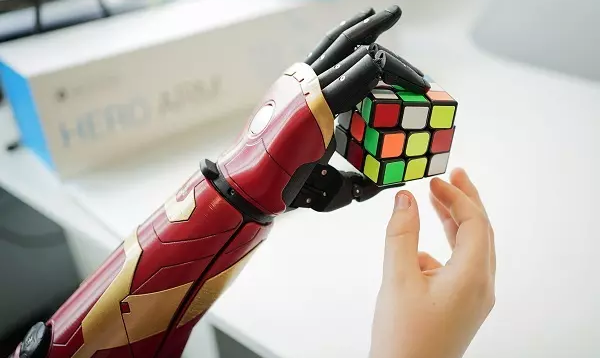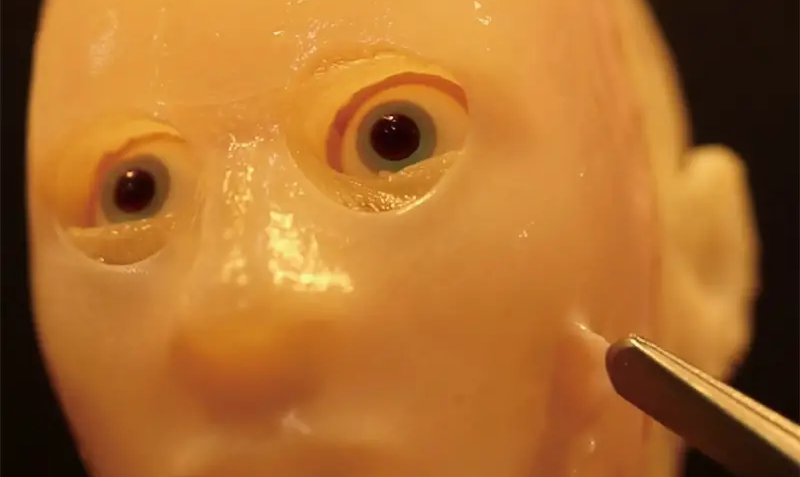3D printing has advanced considerably in the past decade – numerous new materials are available to print with, the quality of printed products has improved significantly, the scale of printing sizes has increased to a scale large enough to print homes, and so forth. One impactful change 3D printing has had is improving relic industries such as the prosthetic limb industry, specifically bionic arms.
This article was written by Jacob Stoner and originally published by Unite.AI.
Globally, there are over 3 million people living with an upper limb amputation and the number is increasing each year. In the US alone, there are over 2.1 million amputees, of those amputees 35% are upper limb amputees and 70% of upper limb amputees are below-elbow. This means there are approximately 441,000 below elbow amputees in the US alone that are potential users of 3D printed bionic arms.
There are three major types of amputation: surgical (vascular, diabetes, etc), trauma (war, car crashes, etc), and congenital (missing or malformed extremities at birth). Most amputees choose some type of prosthetic solution for their missing limbs, and many of them choose prosthetic assistive devices as their solution. Traditionally, prosthetic assistive devices have been incredibly expensive and heavy, making them financially inaccessible and awkward. Multiple startups are working on changing that – one startup, Open Bionics has developed the first clinically approved 3D printed bionic arm called the Hero Arm™.
Open Bionics
Launched in 2014, Open Bionics was developed inside the Bristol Robotics Laboratory, the most comprehensive academic center for multi-disciplinary robotics research in the UK. It has been the first company to bring an affordable multi-grip bionic hand (Hero Arm) to the NHS in the UK.
In 2019, the company successfully raised USD$8.9 million via a crowdfunding campaign. Both Co-Founders (Joel Gibbard and Samantha Payne) are recipients of multiple awards; Mr. Gibbard was recently named Britain’s Design Engineer of the Year and was awarded the Limbless Association Prosthetic Innovation of the Year award. Meanwhile, Ms. Payne has won two British Engineering Excellence Awards and the James Dyson award for innovative design.
To note, the company is committed to keeping the code open-source to further advance the community.
Everyday superheroes
Open Bionics works with companies like Disney to help children with missing limbs transform into bionic superheroes which is one of the company’s differentiators, along with cheaper prices. With prices ranging from USD$12,400 to $16,500, the Hero Arm is more affordable than competing arms that range from $20,000 to $80,000. Open Bionics has also teamed up with game developer Konami to offer a Metal Gear Solid bionic arm based on the video game character Venom Snake. The company is clearly committed to making useful and fun bionic arms.
Hero Arm to the rescue
The charitable foundation Superhumans, backed by Mastercard, has partnered with Open Bionics to provide bionic solutions for victims who have lost limbs as a result of the Russian invasion of Ukraine, a country plagued with 82,000 sq/km of land mines. With the assistance of Ukraine’s Ministry of Health, Open Bionics and Superhumans have opened a specialist hospital in Lviv, Ukraine, where they are committed to pursue long-term prosthetic, rehabilitation, and counseling services.
“The philosophy of Superhumans is that our patients receive the best medical service at home, next to their families, in their own language”, added Superhumans CEO Olga Rudneva. “Once the Superhumans Centre opens, it will take up to 3,000 patients each year. All services will be free for patients thanks to partners and donors.”
In 2020, British Army veteran Darren ‘Daz’ Fuller who lost part of his arm in Afghanistan became the first to receive a 3D-printed Hero Arm at the NHS. Fitted as part of a clinical trial designed to assess the feasibility of artificial prosthetic limbs restoring regular use of his hand. Soldier Fuller note that it was “fantastic to be the first veteran to get a Hero Arm,” but he hoped to be the first of many war-wounded Hero Arm users. With Open Bionics latest initiative in Ukraine, Daz is likely to be the first of many war survivors to use a Hero Arm.
Hero Arm, the details
The Hero Arm is an advanced, lightweight, 3D printed bionic arm, with multi-grip abilities and empowering aesthetics thanks to hero themed partnerships. Engineered and manufactured in the UK, it is now available in over 800 locations for people with a below-elbow limb difference. The Hero Arm is suitable for adults and children as young as 8 and it features 6 easy-to-select grips designed to assist with everyday tasks.
Grip 1, the fist, allows you to pick up bottles, hold onto handles, or even shake someone’s hand. Grip 2, the hook, is ideal for carrying things like briefcases, shopping bags, or something as simple as giving the thumbs up. Grip 3, tripod A, provides a delicate touch for small and thin objects with the ring and pinky fingers open. Grip 4, tripod B, provides a delicate touch for small objects with the ring and pinky finger closed. Grip 5, pinch A, used to pick up very small objects or to give the A-ok sign. Grip 6, pinch B, used to pick up very small objects or to make them come here sign.
The Hero Arm has a 180-degree wrist that allows a broader range of movements in combination with the 6 different hand movements. Combined with the wide variety of Mag swap removable covers, including Star Wars BB-8 and R2-D2, Marvel Iron Man and Black Panther, Disney Frozen, and many more. You can even wear the Hero Arm with no covers revealing the breath tech 3D printed frame. Adjustability is controlled by Open Bionics Boa technology which allows adjustments to be made throughout the day as your arm expands and contracts. The flexible 3D printed vent tech liner consists of a flexible elastomer designed to conform to your arm. The fluted design allows the prosthesis to be taken on and off with ease.
The strategic use of 3D printed technologies results in more efficient and comfortable prosthetics with very little maintenance besides a regular cleaning, and a lighter and less cumbersome limb resulting in a much more at-home feeling when worn. Open Bionics even designed a user interface app resulting in a much shorter learning curve and giving greater access to the bionic limb’s abilities.
3D printing on the right side
3D printing is often negatively associated due to its ability to 3D print weapons or spy drones. Companies like Open Bionics showcase how 3D printing can have a positive impact on society.
With the assistance of 3D printing, Open Bionics is changing lives one limb at a time.





